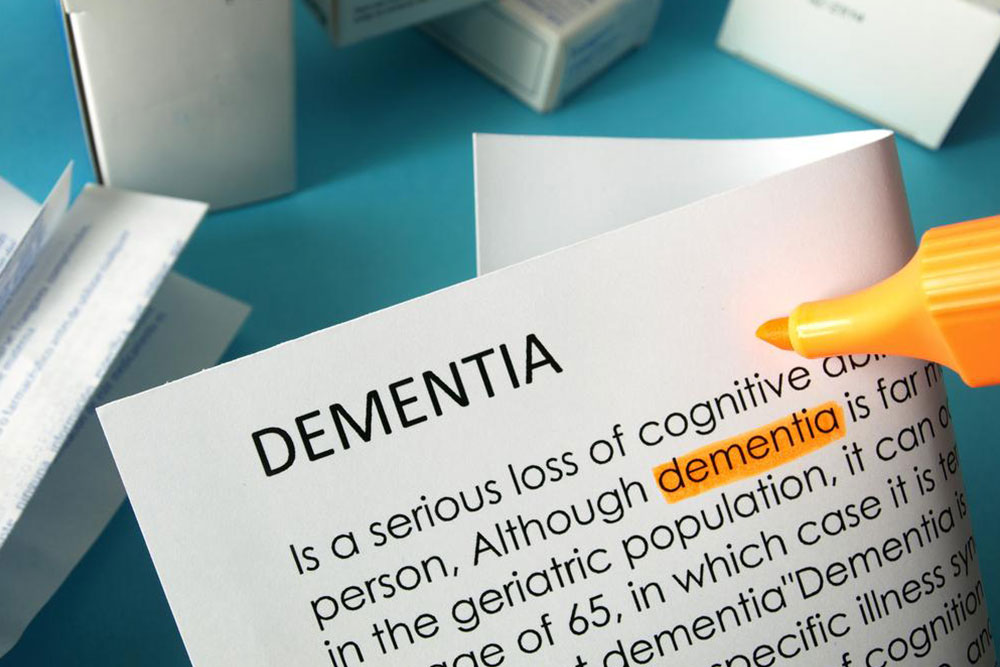Comprehensive Guide to Different Types of Dementia: Causes, Symptoms, and Treatments
This comprehensive guide explores various dementia types, including Alzheimer’s, vascular dementia, Lewy body, Parkinson’s, Huntington’s, and frontotemporal dementia. It highlights causes, symptoms, diagnostic methods, and treatment options, aiming to promote awareness and early intervention. Understanding these conditions can help families and caregivers provide better support and improve patient outcomes.

Understanding the Different Types of Dementia
Dementia refers to a broad spectrum of neurological disorders characterized by progressive decline in cognitive functions, including memory, reasoning, language, and motor skills. As the global population ages, dementia has become an increasingly critical public health concern, affecting millions of individuals worldwide. Despite extensive research, there is currently no cure for dementia; however, early diagnosis and appropriate management can significantly enhance quality of life for patients and their families. This comprehensive guide explores the various types of dementia, their underlying causes, distinct symptoms, and available treatment options.
What Is Dementia?
Dementia is a collective term used to describe a variety of brain disorders that impair cognitive functions. The progression of these conditions varies depending on the type, but most lead to a decline in reasoning, memory, language, and ultimately, the ability to perform everyday activities. Dementia can also impact emotional regulation and social behavior, leading to personality changes and psychological disturbances. It predominantly affects older adults, although early-onset cases can occur in people younger than 65. As the disease advances, individuals often require increased levels of care, making early diagnosis critical for optimal management.
Types of Dementia: An In-Depth Examination
Alzheimer’s Disease
Alzheimer’s disease is the most common form of dementia, accounting for approximately 60-80% of cases. It is characterized by progressive neurodegeneration, primarily affecting the brain regions responsible for memory, cognition, and language. Early symptoms typically include forgetfulness, difficulty recalling recent events, and challenges in organizing thoughts. As the disease progresses, individuals may struggle to communicate, become disoriented in familiar environments, and exhibit poor judgment. Behavioral changes such as agitation, depression, and anxiety are also common.
Pathologically, Alzheimer’s involves the accumulation of amyloid plaques and neurofibrillary tangles in the brain, leading to neuronal death. While the exact cause remains unknown, genetic, lifestyle, and environmental factors are believed to play roles. Currently, treatment options focus on managing symptoms with cholinesterase inhibitors and NMDA receptor antagonists. These medications may modestly slow disease progression and improve cognitive function temporarily. Supportive therapies, including cognitive training and behavioral interventions, are essential in enhancing daily living capabilities and well-being.
Beyond memory decline, individuals often get lost in familiar settings, confuse dates and times, and experience personality shifts that can be challenging for families and caregivers.
Vascular Dementia
Vascular dementia results from reduced blood flow to the brain, often following strokes or recurrent smaller vascular events. It accounts for approximately 10-15% of dementia cases. The clinical presentation varies based on which brain regions are affected, but common symptoms include impaired decision-making skills, memory issues, and motor impairments like clumsiness or weakness. Behavioral and personality changes may also be observed, alongside difficulties with language and communication.
Diagnosis often involves neuroimaging studies such as MRI or CT scans to identify cerebrovascular damage. Managing vascular risk factors—such as hypertension, diabetes, and high cholesterol—is crucial to prevent further deterioration. While vascular dementia’s progression can be variable, controlling contributing health issues can help reduce cognitive decline. In some cases, medications used for other vascular conditions may be beneficial, and multidisciplinary approaches including physical, occupational, and speech therapies are often employed to optimize function.
Dementia with Lewy Bodies
This type of dementia is characterized by the abnormal buildup of Lewy bodies—clumps of protein deposits—in brain cells. It accounts for roughly 15-20% of dementia cases. Patients often present with fluctuating cognition, vivid visual hallucinations, and Parkinsonian motor symptoms, such as tremors, stiffness, and gait disturbances. Drowsiness and episodes of sudden blackout may also manifest, complicating diagnosis and management.
Lewy body dementia shares features with both Alzheimer’s and Parkinson’s diseases, making differential diagnosis vital for appropriate treatment. Cholinesterase inhibitors can provide some symptomatic relief, especially for cognitive and visual hallucination symptoms. Furthermore, medication adjustments may be necessary to manage Parkinsonian features without exacerbating cognitive issues. Supportive therapies and caregiver education are key components of care for individuals with Lewy body dementia.
Parkinson’s Disease Dementia
Associated with the neurodegenerative disorder Parkinson’s disease, this form of dementia typically develops in the later stages of Parkinson’s, when the primary motor symptoms—such as tremors, rigidity, and bradykinesia—become prominent. The decline in cognitive function manifests as impaired attention, executive dysfunction, and visual-spatial deficits. Similar to Lewy body dementia, Lewy bodies are found in the brain, leading to neuronal damage that impacts cognition.
Management focuses on optimizing Parkinson’s treatment regimens, including dopaminergic medications, while addressing dementia symptoms with cholinesterase inhibitors. Since medications for Parkinson’s can sometimes worsen psychiatric symptoms, careful monitoring is essential. Interdisciplinary approaches, including behavioral therapies and caregiver support, are vital to improve the quality of life for patients.
Huntington’s Disease
This is a hereditary neurodegenerative disorder caused by a genetic mutation in the HTT gene. It typically begins between ages 30 and 50 but can appear earlier or later. Symptoms include involuntary movements (chorea), behavioral changes, and cognitive decline. Patients often experience forgetfulness, poor judgment, difficulty concentrating, and challenges with planning and organizing tasks.
The disease progresses over 10-25 years, leading to severe disabilities and loss of independence. Currently, no cure exists, but treatments are aimed at managing movement symptoms and psychiatric disturbances. Genetic counseling and testing are crucial for at-risk individuals and families. Supportive care with physical, occupational, and speech therapies can help maintain function and improve the patient’s quality of life.
Frontotemporal Dementia
This less common but impactful form involves damage to the frontal and temporal lobes of the brain. It often affects individuals in their 50s and 60s. Symptoms include significant changes in personality and social behavior, such as disinhibition, apathy, and poor judgment. Language impairments, including difficulty finding words and constructing sentences, are common. Additionally, some patients may experience movement problems similar to those seen in Parkinson’s disease.
Unlike Alzheimer’s, memory might be relatively preserved in the early stages. Treatment strategies include behavioral therapies and medications to manage symptoms, but there is no cure. The disease’s progression can place considerable emotional and physical burdens on families, emphasizing the importance of caregiver support and multidisciplinary care approaches.
Conclusion
Understanding the diverse types of dementia is crucial for early diagnosis, appropriate management, and support planning. Each form has distinct characteristics and requires specialized treatment strategies. Advances in medical research continue to improve our understanding of these complex conditions, offering hope for future therapies. If you or a loved one experience cognitive decline, seeking professional evaluation promptly can make a significant difference in disease trajectory and quality of life.





